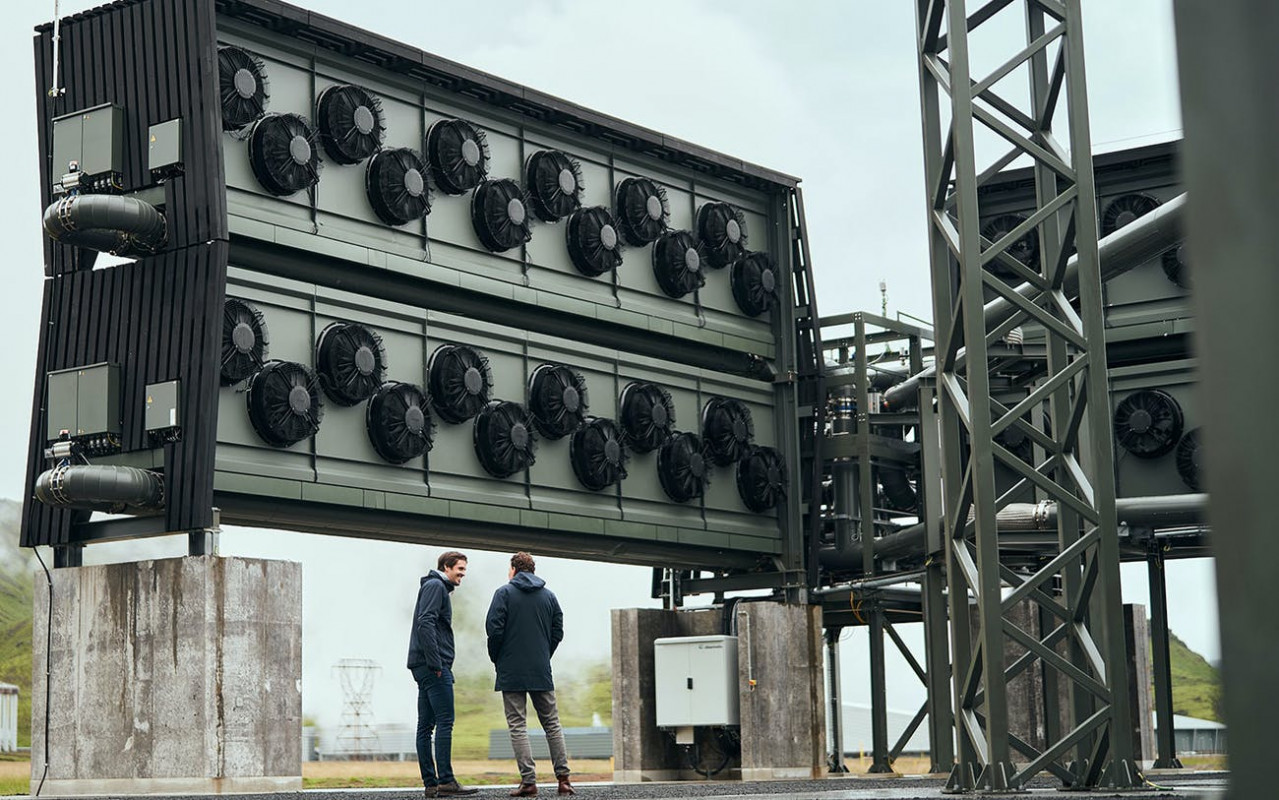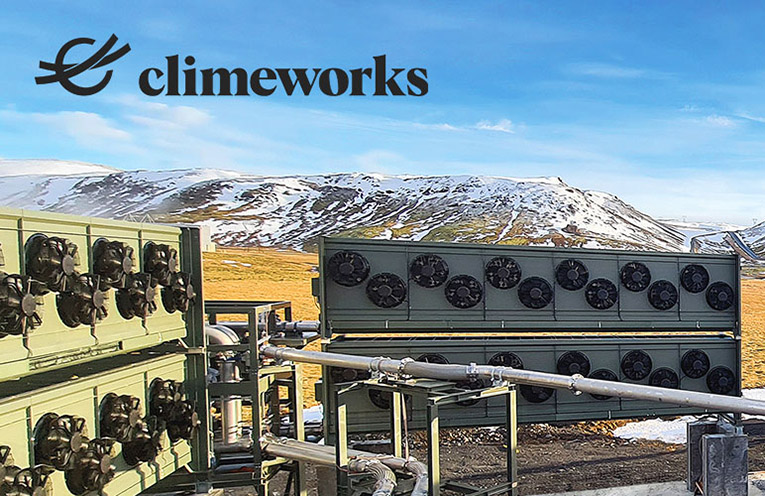 On September 9, the Orca plant started up its fans. With a deceptively soft whir, the world’s largest carbon capture plant began removing planet-warming CO2 from the atmosphere.
On September 9, the Orca plant started up its fans. With a deceptively soft whir, the world’s largest carbon capture plant began removing planet-warming CO2 from the atmosphere.
Orca marks a significant milestone for a technology known as "direct air capture." What's more, this captured CO2 can be liquefied and transported underground where it slowly solidifies into rock!
This new plant is located just outside Reykjavik, Iceland and now joins 15 other carbon capture technologies worldwide. Orca is projected to capture and store 4000 tons of carbon a year.
How does Orca’s technology work, and how will it contribute to efforts against climate change? Let’s take a look.
From CO2 to Rock
 Orca consists of eight container buildings that are built over a lava plateau. Each of the buildings is fitted with a complex system of fans and filters.
Orca consists of eight container buildings that are built over a lava plateau. Each of the buildings is fitted with a complex system of fans and filters.
Within each “collector container”, large fans pass air over a special filter that isolates CO2. When this filter gathers enough CO2, it is heated up to about 100°C. This releases the CO2 into another building in preparation for underground storage.
Here, it is mixed with water -- about 27 tons of water for every 1 ton of carbon dioxide! The mixture is then transported to basalt rock caverns deep underground. In these caverns, the carbon is gradually absorbed into rock over a period of two years.
Orca runs on energy from Iceland's geothermal plants. Also, since it is situated exactly where carbon dioxide is captured, it removes the need for long pipelines -- and hence, reduces the risk of leaks and ruptures.
Concerns, And Hopes
While the technology at Orca is promising, it only removes the emissions produced by around 260 humans or 800 cars per year. To really make a difference, a facility like Orca would have to be present “one every street corner” as researcher Peter Psarras explained.
In addition, carbon capture is quite expensive, costing $600-$800 per ton of carbon. Christoph Gebald, the co-founder of Climeworks, estimates that Orca can reduce costs to $200-$300 by 2030, and to $100-$150 by 2040.
Another major concern from environmental groups is that the use of carbon capture may prevent fossil fuel companies from taking action. They would rather that companies focus on eliminating fossil fuels, and not just reducing emissions.
Nevertheless, Orca represents a step in the right direction. Larger direct air capture projects like Orca are being built in Scotland and Texas which will run on renewable energy and natural gas.
Sources: Smithsonian, The Verge, Washington Post






